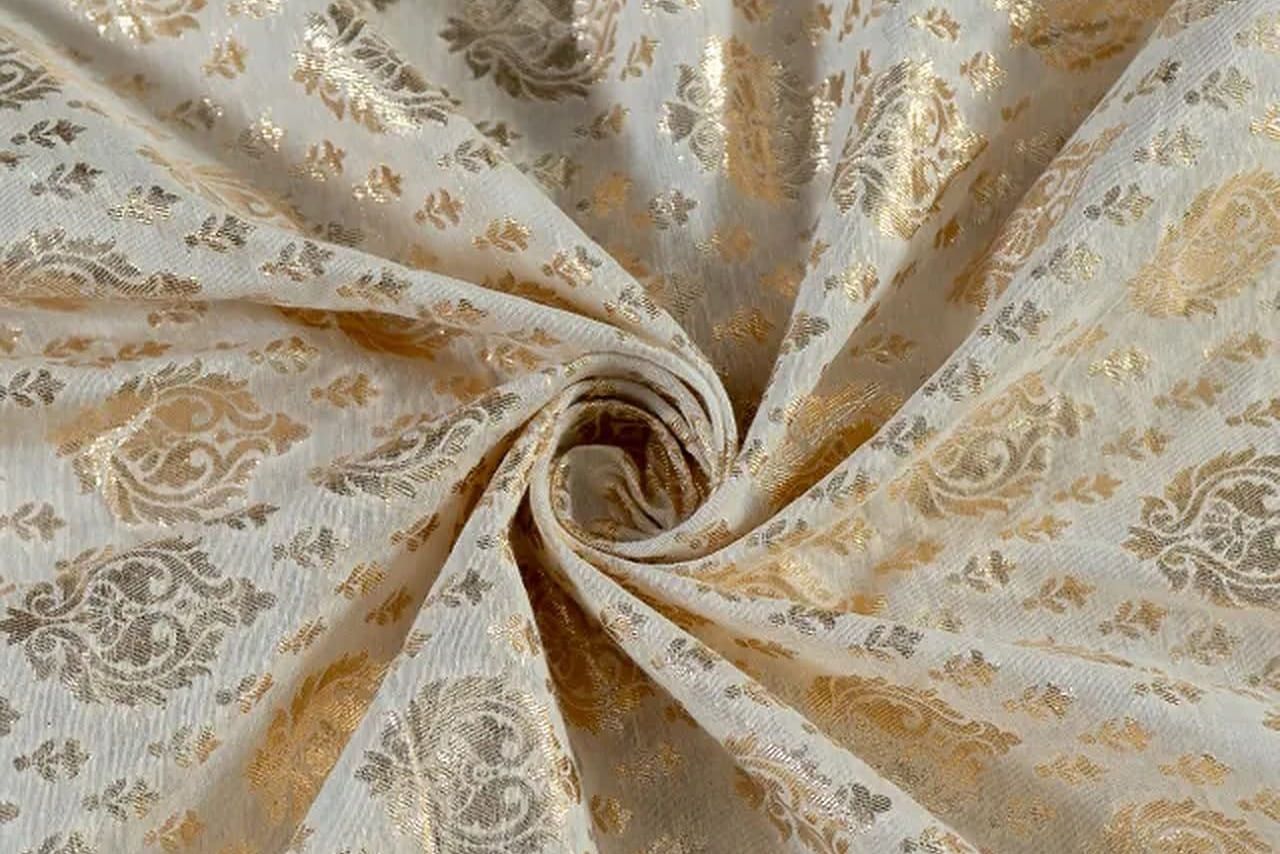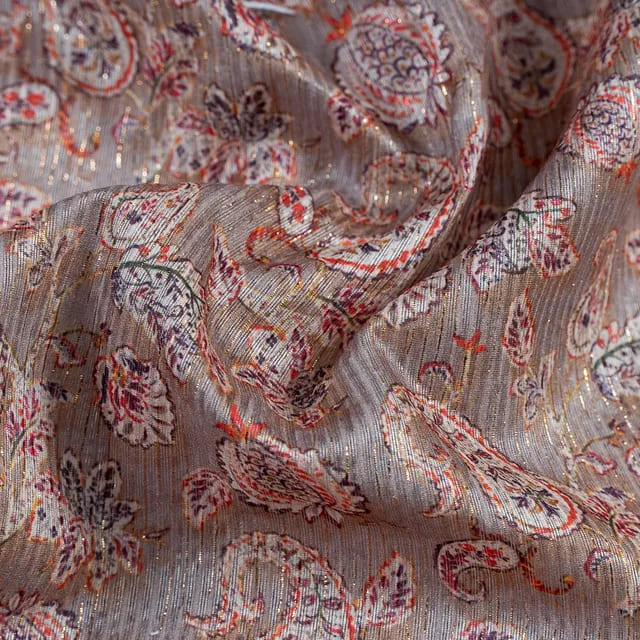- Home
- Blogs
- FabCouture
- Chanderi: The Golden Fabric That Shimmers with Tradition
- Chanderi: Th...
Chanderi: The Golden Fabric That Shimmers with Tradition
- By FabCouture
- • Apr 16, 2023

Chanderi is a luxurious traditional fabric known for its sheer, lightweight texture and exquisite feel. The fabric is woven with silk and golden zari in cotton yarn, resulting in a shimmering texture that exudes elegance. The name Chanderi is derived from a small town in Madhya Pradesh, India, where traditional weavers have been producing textured sarees in cotton and silk adorned with fine zari work for centuries.
History and Origin
Chanderi's weaving culture can be traced back to the 2nd and 7th centuries when it evolved on the border of Malwa and Bundelkhand, two cultural regions of the state. The people of the Vindhyachal Ranges had a rich tradition of weaving, which flourished with the increasing trade locations of Malwa, Medwa, central India, and south Gujarat in the 11th century.
The Chanderi saree tradition originated in the 13th century and was initially practiced by Muslim weavers. Later, in around 1350, Koshti weavers from Jhansi migrated to Chanderi and became an integral part of the weaving community. The textile industry of Chanderi flourished during the Mughal era, reaching the zenith of its glory.
The Weaving Process
Chanderi fabric was initially crafted with handspun cotton yarn as delicate as 300 counts, earning it the same fame as Dhaka Muslins. The fine cotton count was extracted from a special root called the Kolikanda, which was light yet strong and gave the fabric a glossy finish. The Mughals and Rajputs patronized fine cotton from Chanderi for a long time. The fabric is woven with a warp (tana), a set of threads stretched out, through which the weft (bana) is passed in a regular motion.
Chanderi fabric was originally woven with handspun cotton yarn, with zari and golden thread embellishments. The warp thread count varied from 4,000 to 17,000, with cotton, mercerized cotton, raw silk, or kataan used in the weft. In the past, throw-shuttle pit looms were utilized, which necessitated two weavers sitting together on the same loom.
Today, raw silk is used in the warp of almost every saree, creating a lustrous finish and making the weaving process easier. Earlier, throw-shuttle pit looms were used, requiring two weavers to sit side by side on the same loom. Nowadays, fly-shuttle looms are in use, operated by a single weaver.
Previously, the yarn used for weaving was dyed with natural dyes, but currently, both natural and chemical dyes are utilized. Many of the color names used are derived from natural things like fruits, vegetables, flowers, birds, etc.
Conclusion
It takes more than three days to spin a handwoven Chanderi saree, depending on the complexity of the design. Chanderi fabric symbolizes India's rich cultural heritage and has been cherished for centuries. Its shimmering texture, lightweight, and luxurious feel make it a sought-after fabric for special occasions like weddings and festivals.
Fabcouture’s luxurious Chanderi zari fabric collection is the perfect choice for those seeking high-quality and beautifully crafted fabrics. Whether you're dressing up for a wedding or a festival, our Chanderi collection is sure to impress.
Leave a Comment
Blogs
Popular Posts
Newletter
Thanks for subscribe.

Fabcouture is an online fabric store to satisfy all your couture fabrics cravings for fabric connoisseurs. We delight in the fact that we source...

0 Comment